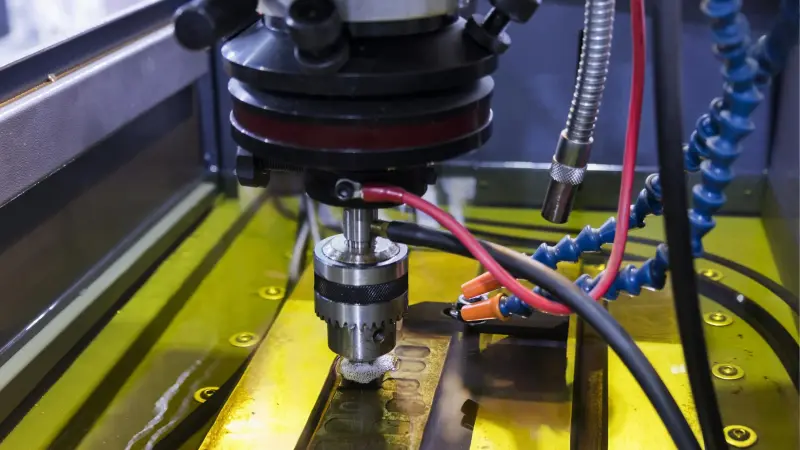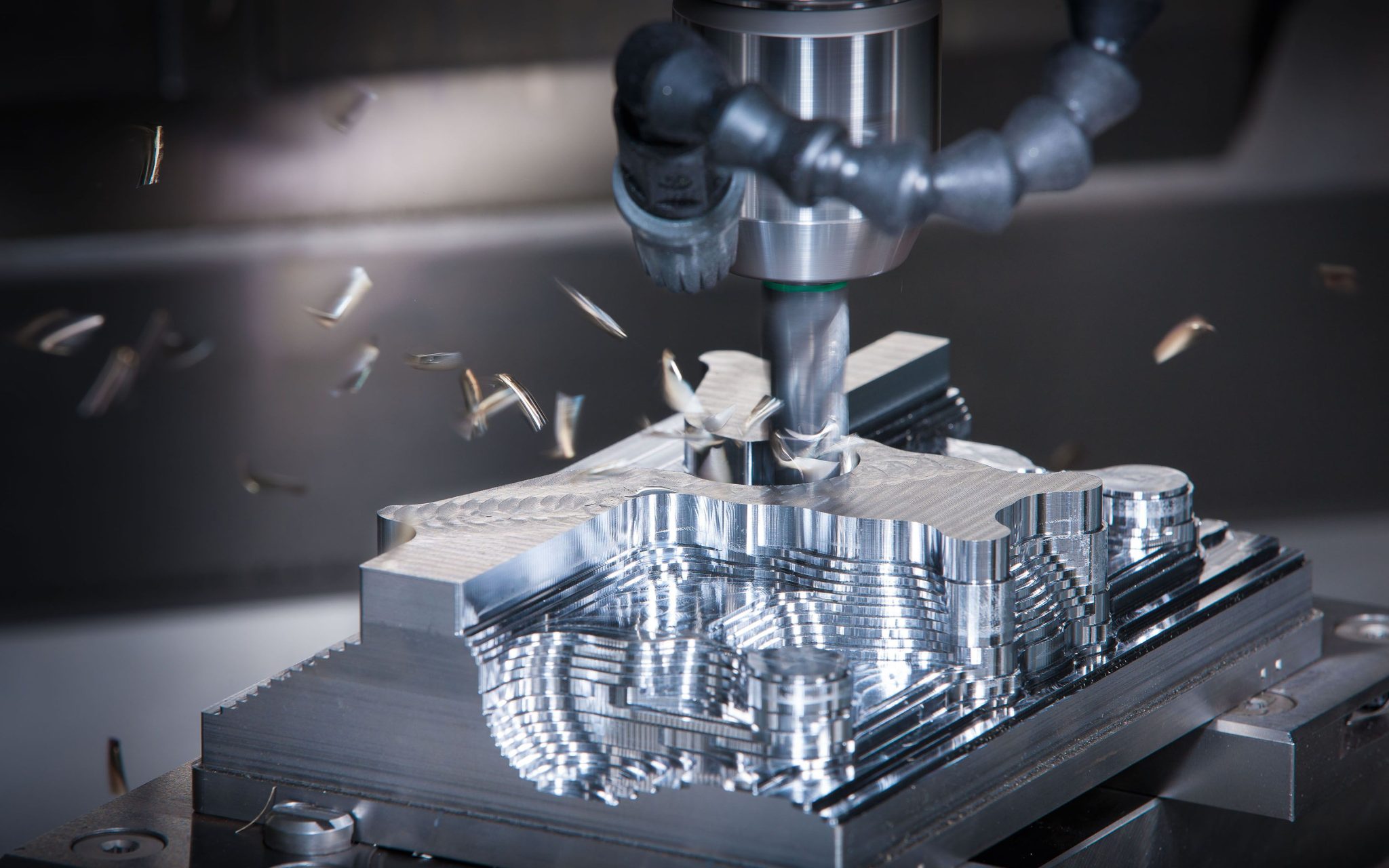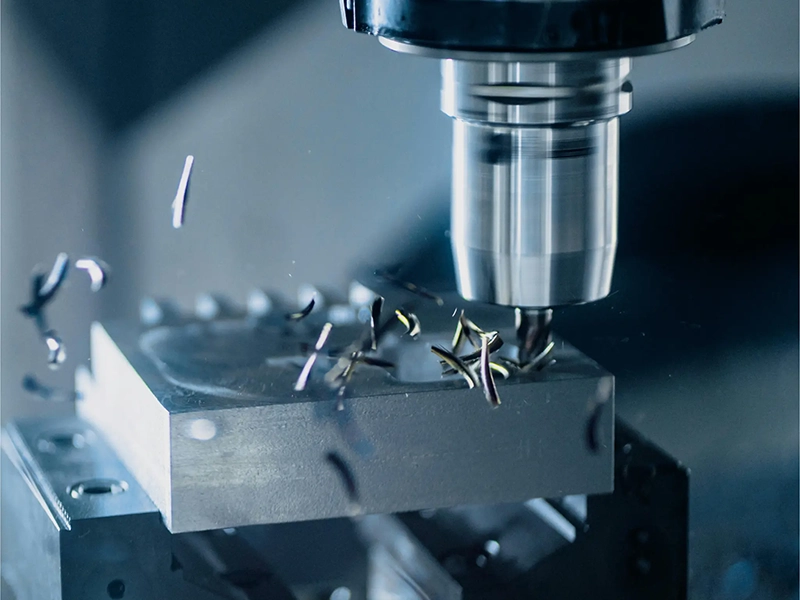What is CNC Grinding? 5 Key Benefits for ±1μm Accuracy
In modern manufacturing, precision and surface finish often determine the performance and longevity of a product. Among many machining technologies, CNC grinding is an important machining technology. It is crucial for industries like aerospace, medical devices, and high precision tooling. This is because it offers great precision and a smooth surface finish.
So what exactly is CNC grinding? Why is it so important? This article provides an in-depth analysis of the core values of this high-precision machining technology.
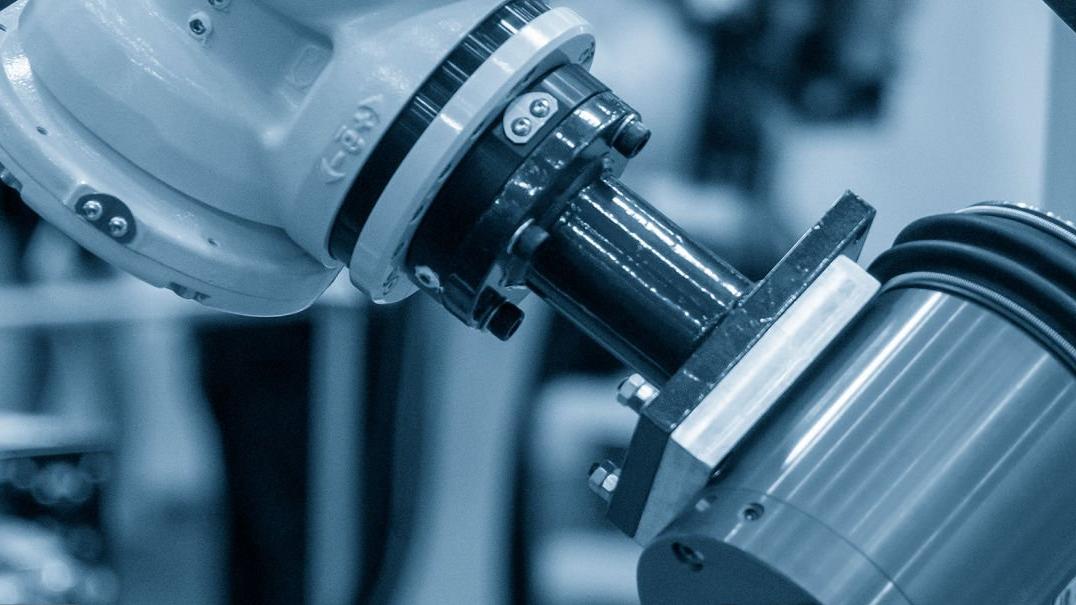
What is CNC grinding?
CNC grinding is a high-precision grinding process using Computer Numerical Control (CNC) technology. A fast-spinning grinding wheel is used as a tool. It carefully removes small amounts of material from the workpiece. This process helps achieve the right size and finish.
In contrast to conventional turning or milling, CNC grinding prioritizes achieving micron-level precision and mirror-like surface finishes rather than removing substantial material quantities.
It is especially good for machining hard metals and complex shapes. People use it for parts that need very high accuracy. This method is common in aerospace, medical devices, precision tools, and other areas.
Basic Principles of CNC Grinding
CNC grinding is a precise machining process. It uses a fast-spinning grinding wheel to remove small amounts of material. This helps achieve the right size and surface quality for the workpiece.
It is different from regular turning or milling. It focuses on very precise accuracy and finish. This method works well for hard metals and complex parts.
1. The grinding process
CNC grinding takes away small amounts of material. This happens when the cutting particles of the grinding wheel touch the workpiece’s surface. The grinding wheel rotates at high speed and the hardness of the cutting particles determines the grinding effect.
The cutting process consists mainly of a feed motion and a rotary motion that ensures precise dimensions and surface finish.
2. Role of the grinding wheel
The particle size, hardness and shape of the grinding wheel directly affect the grinding effect. The finer the grain size, the smoother the surface; the higher the hardness, the more suitable for the processing of hard materials; different shapes of grinding wheels to adapt to different processing needs.
3. CNC control system
The CNC control system controls the movement of the grinding wheel and the workpiece. It manages the depth of cut, speed, and wheel rotation speed. This ensures high-precision machining.It adapts to automated machining of complex parts and provides precise path control.
4. Use of coolant
Coolant lowers the temperature while grinding. It prevents the workpiece from deforming and helps the grinding wheel last longer. Appropriate coolant flow rate and spraying method can improve cutting efficiency and surface quality.
5. Accuracy and surface quality
CNC grinding offers very precise control over dimensions and smooth surfaces. It usually achieves ±1 micron accuracy and a surface finish of Ra 0.05 μm. This process is ideal for parts that need very high precision.
CNC grinding is a key technology for making high-precision parts. It offers great accuracy and surface quality. This is achieved by carefully controlling the grinding process, the grinding wheel, and the use of coolant.
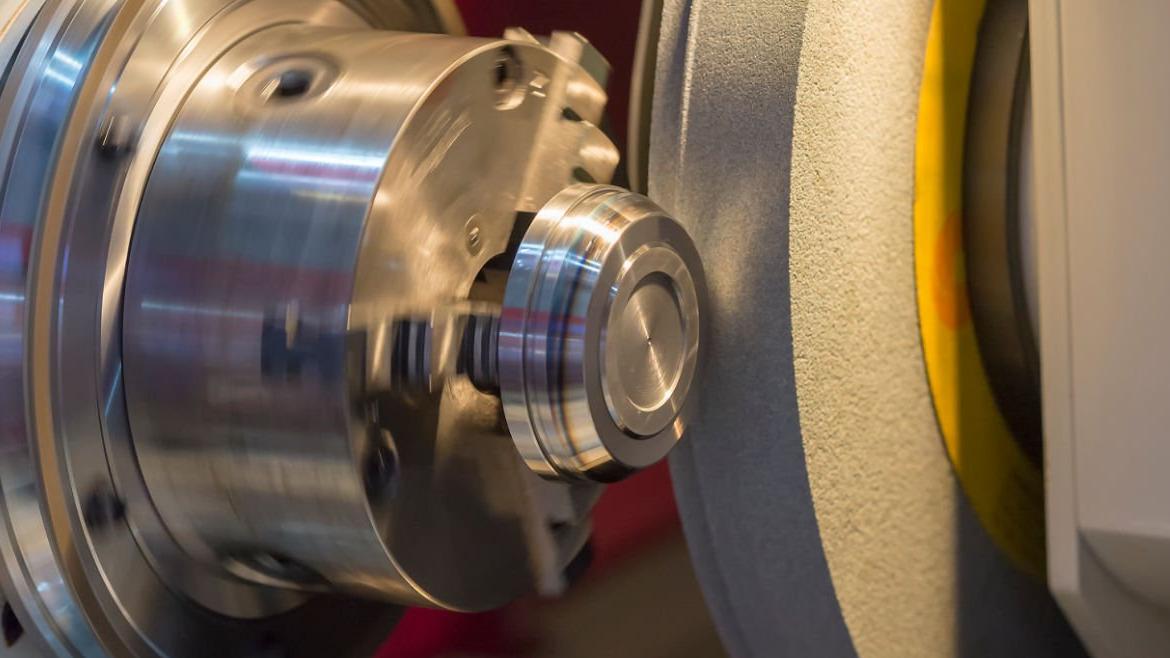
Main types and characteristics of CNC grinding
It is not just one process. It includes several types based on the shape and needs of different parts. We choose different grinding methods for each type. Its types and characteristics:
| Type of grinding | Main features | Applicable Parts/Application Scenarios | Accuracy Class(μm) | surface roughness Ra(μm) | Suitable for large quantities | dominance |
| Surface grinding | Machining of flat surfaces of workpieces to ensure high flatness and parallelism | Molds, fixture parts, flat parts | 2~5 | 0.2~0.8 | NO | High surface finish, suitable for hard materials, high precision |
| Cylindrical grinding | Machining of cylindrical external surfaces, maintaining high coaxiality and roundness | Shaft parts, rollers, motor shafts, rotors | 1~3 | 0.1~0.4 | NO | High precision, suitable for rotating parts, improves stability of parts. |
| Mindless grinding | Workpieces can be machined by rotating freely between two grinding wheels without the need for a center clamp. | Large-volume cylindrical parts such as small shafts, pins, syringes, etc. | 1~2 | 0.05~0.2 | YES | High efficiency, high degree of automation, suitable for mass production |
| Internal Grinding | Machining of internal holes or internal diameters, suitable for precision hole parts | Sleeves, bearing inner rings, hydraulic valve bodies, etc. | 1~3 | 0.2~0.5 | NO | Realizes micron-level I.D. accuracy, can be used for complex internal structures |
Why is CNC grinding so important?
CNC grinding is a key technology. It helps make parts precise and improves product quality. Here are a few aspects of its importance:
1. Improvement of dimensional accuracy
CNC turned or milled parts can have small changes in shape or size. This is common for precision parts that need tight tolerances at the μm level, like shafts, guide rails, and molds. Grinding can help improve the size accuracy to IT5-IT7 or even better.
2. Improve surface finish
The surface roughness of turning and milling is usually between Ra 0.8 and 3.2 μm. Precision grinding can lower the surface roughness to Ra 0.1 to 0.2 μm or even less. This makes the surface of the parts smoother. It also improves the wear resistance and matching accuracy of the parts.
3. Remove heat treatment deformation
Some CNC machined parts, like molds, bearings, and gears, may change shape slightly after heat treatment. This includes processes like quenching and tempering. To fix this, you need to grind the material to ensure the final shape and size are correct.
4. Machining of high hardness materials
For some hard materials like hardened steel, carbide, and ceramics, traditional milling and turning tools struggle to cut well. However, grinding tools, especially CBN and diamond grinding wheels, can process these materials efficiently. This ensures good precision and surface quality.
5. Ensure the shape and position tolerance
For parts that need high precision in roundness, flatness, and coaxiality, grinding is very useful. This includes shafts, pistons, guide rails, and valve sealing surfaces. Grinding can reduce shape and position errors. It also helps ensure stable assembly and operation.
6. Reduce cutting force and improve stability
Grinding is a type of micro cutting. The cutting force is small, which helps prevent deformation of the workpiece. This makes it exceptionally good for processing thin-walled parts or high-precision parts.
Industry applications for CNC grinding
CNC grinding has become an indispensable machining technology for several high-end industries, and the main application areas include:
1. Aerospace
Aircraft engine blades, precision bearings, turbine components and other critical parts require high-precision machining, and CNC grinding ensures excellent reliability under extreme conditions.
2. Medical Instruments
Surgical tools, artificial joints and dental implants require extremely high dimensional tolerances and surface finishes. CNC grinding enables ultra-high precision machining to ensure product biocompatibility and longevity.
3. Automotive Manufacturing
CNC grinding helps make high-precision parts like crankshafts, gears, and injectors. It improves engine performance, fuel efficiency, and service life.
4.Precision Mold Manufacturing
CNC grinding can make high-precision molds. This ensures product consistency and surface quality. It also improves mold lifespan and lowers production costs.
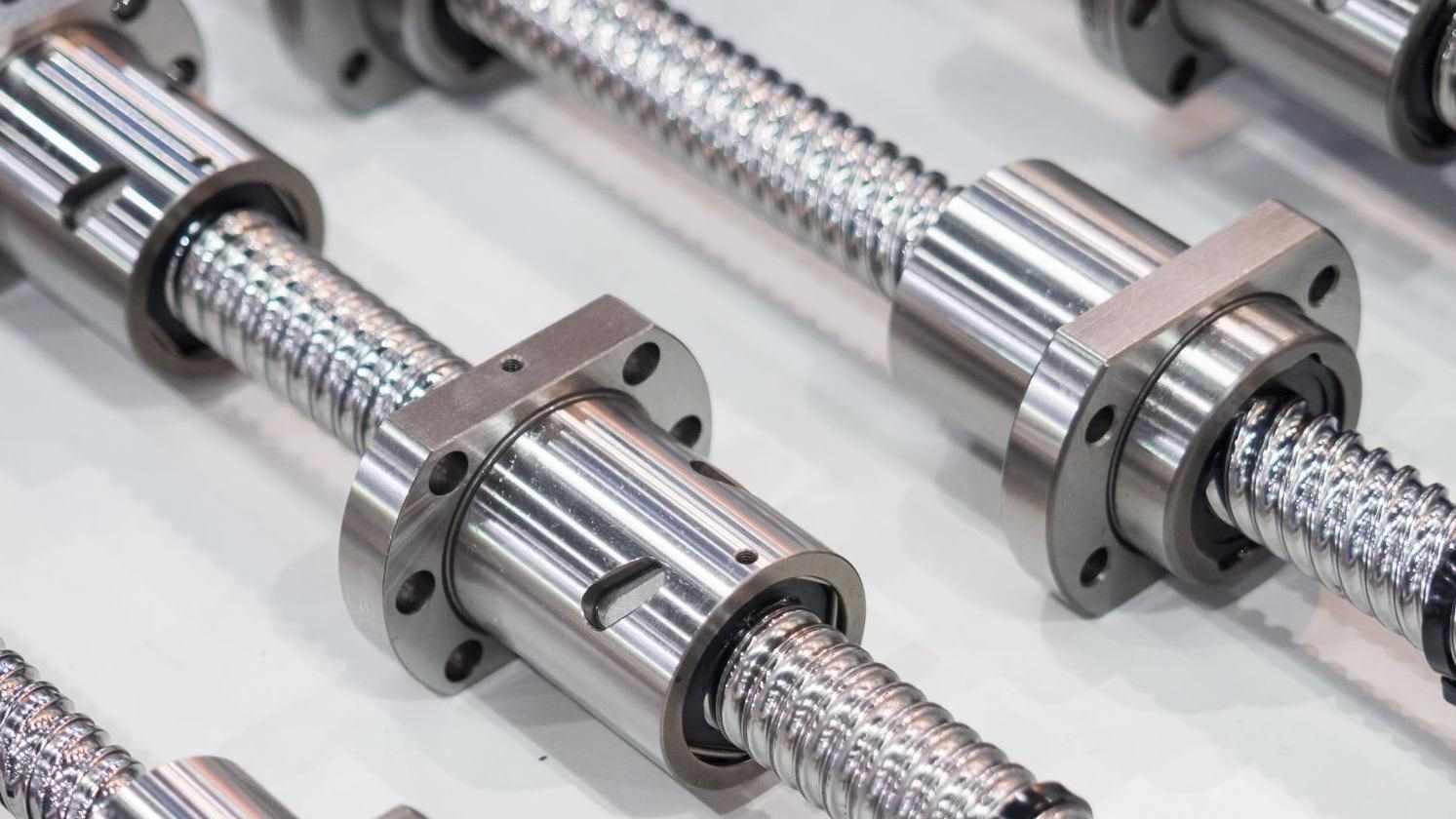
The future of CNC grinding
The future development of CNC grinding is mainly focused on the following aspects:
1. High-precision machining:
As technology keeps advancing, CNC grinding machines will achieve higher precision. They can reach micron or even nanometer levels. This will help meet the needs of industries like aerospace and medical, which have high demands.
2. Intelligence and Automation:
With Artificial Intelligence (AI) and machine learning, CNC grinding machines will automate regulation and optimization. This will improve efficiency and quality while reducing the need for manual work.
3. Green Manufacturing:
The future of CNC grinding will be more eco-friendly. It will reduce energy use and waste. It will also use green cutting fluids and materials. This change will help meet sustainable development goals.
4. Multi-functional integration:
CNC grinding machines will do more than just grinding. They will also include cutting, milling, and drilling. This will improve flexibility and efficiency in processing.
5. Digitalization and remote monitoring:
Many industries will use CNC grinding machines extensively in digital technology. They will allow real-time monitoring of the machining process. Remote diagnosis and maintenance will also be possible. This will improve the reliability and productivity of the equipment.
Summary
As a key process in precision machining, CNC grinding’s advantages in dimension control, surface quality, and material adaptability are irreplaceable. As the manufacturing industry seeks “precision and beauty,” It will become more important in many areas.
FastPreci offers high-precision CNC grinding services, including surface grinding, cylindrical grinding, and internal grinding for various industries. Achieve precision machining with ±1μm accuracy.
If you need a CNC grinding partner that offers high precision, quick delivery, and reliable processes, contact FastPreci. We will use technology and quality to create every micron-level perfection for your products!


